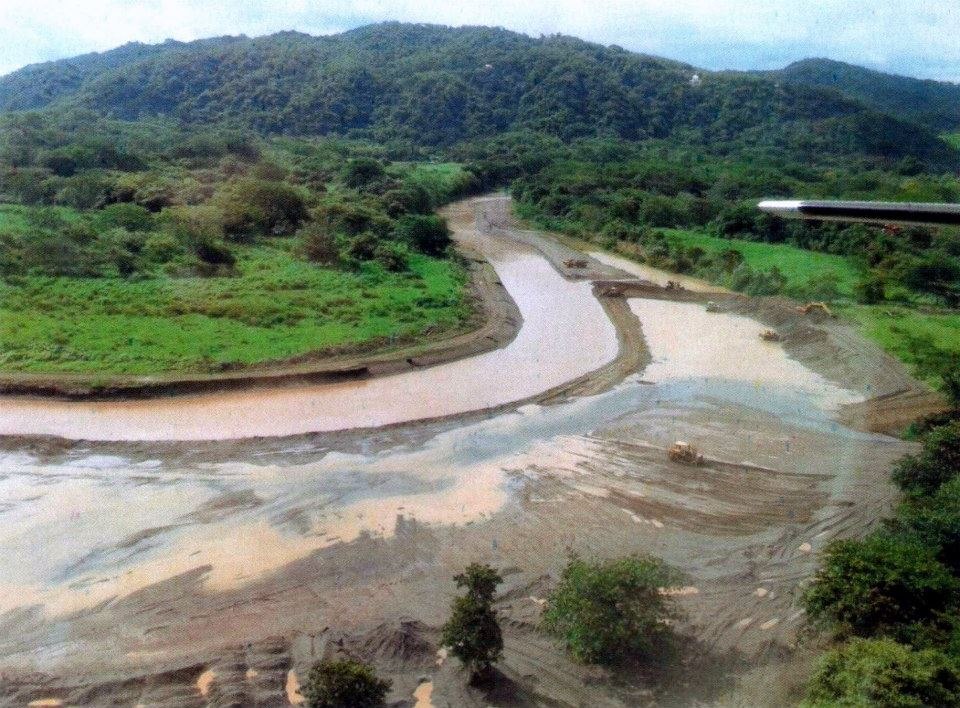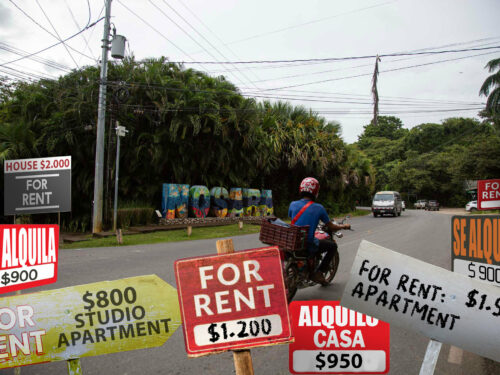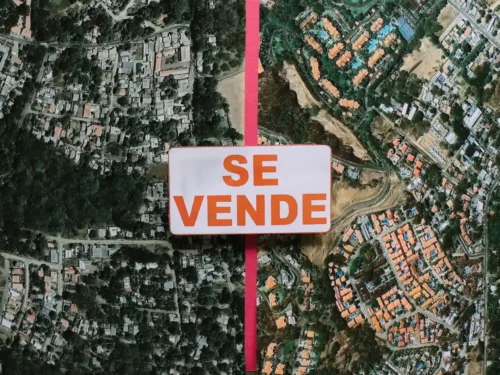
A modification order has been submitted to the National Emergencies Commission (CNE) to request an additional 124 million colones ($248,000) for the first phase of the Nosara River dreding and dike project, according to Ricardo Chinchilla, the engineer from the National Service of Groundwater, Drainage and Irrigation (SENARA) in charge of the project. Hopefully the modification will be approved in early July so work can continue without letup.
The work initiated on April 24th and is being done by the construction company HHB Consa with an initial contract of 248 million colones ($496,000). Initially, they thought they could use material extracted from the river to build the dike, but Chinchilla explained that this hasn’t proved to be the case since the material is not heavy enough. He noted that the first dike built in 2007, which was soon washed away by flood waters, used material from the river.
“We want the investment made with public funds to be lasting,” affirmed Chinchilla. For this reason, and noting that the river has a very high velocity and force, he is proposing putting a protective cap of cement on the dike so it will be able to endure more.
During his inspections of the river, he also noted two tubes with diameters of 1.67 meters that run under the road and is proposing extending these tubes to run under the dike along with a retaining wall of rock with wire mesh. “It wasn’t part of the original plan but we don’t want to be irresponsable,” noted Chinchilla.
Another modification is widening a bend in the river which had a diameter of about 35 meters compared to widths of 50 meters or more in other sections. Chinchilla believes the change in diameter will allow water to flow better.
The idea of the project is to increase the riverbed capacity and build dikes to contain the water during rainy season to prevent the river from flooding streets and homes. Chinchilla explained that the dike, when finished, will be one meter higher than the level of the road, which should be tall enough to contain flood waters since data of floods from previous years showed water reaching half a meter above street level. However, Chinchilla wanted to be clear that “the day it rains and rains hard it will flood the same but when it stops raining it will go down faster.”
Questions about Concessions
Although many neighbors have raised questions about concessions and permits for the work, no formal denunciation has been filed, according to Reinaldo Carballo Fonseca from the CNE’s institutional communication department. He noted that the work is being done on the riverbed, which is public domain. “For this, the respective consultations were presented to the Direction of Waters of MINAET and the permit for extraction of material for emergency was processed with the Direction of Geology and Mines,” he specified.
For the project, Geology and Mines has granted four concessions for extracting materials: one from the river itself, two from properties belonging to John Fraser and one from a property belonging to Manuel Antonio Rosales, both residents of Nosara.
Mario Gomez, head of Geology and Mines for Guanacaste, who was in Nosara to inspect the work, confirmed that “everything is going as it should.” He explained that agreements have been reached with all interested parties. For example, one concession exists for extracting materials from the Nosara River, in the name of Marlin Castillo of Nicoya. The usable material being extracted from that portion of the river is being transported to a collection site belonging to Fraser, as agreed between Castillo and Fraser. At the same time, materials being extracted from below the property of Fraser are being brought back to the river for use in the nucleus of the dike. Gomez specified that materials below the ground of private properties are property of the state.
Some of the material extracted from the river was used to fix part of the road from Rancho Tico in front of the airport toward Arenales, which had previously been reported as affected by Tropical Storm Thomas in 2010. Because of this, the CNE can still intervene to fix it. Gomez said that Castillo gave permission to use some of the material for this purpose and HHB Consta donated the use of the machinery.
After the dredging is completed, Chinchilla said the river will be in good condition; however, he recognized that in a couple of years it may need more work, especially if the concession to extract material is not utilized and material continues to accumulate. He advised that community members should take measurements at fixed points as a control section and evaluate how the river behaves every year to keep an eye on how much material accumulates.







Comments